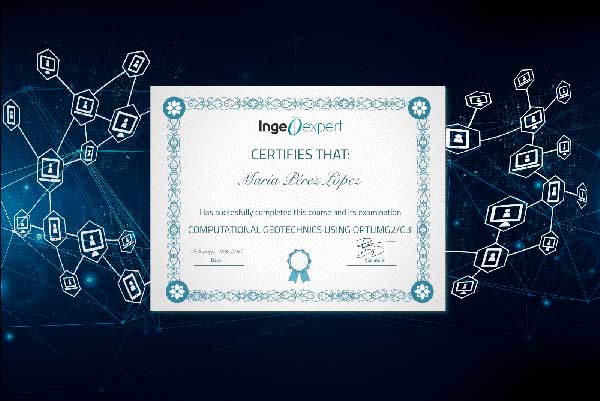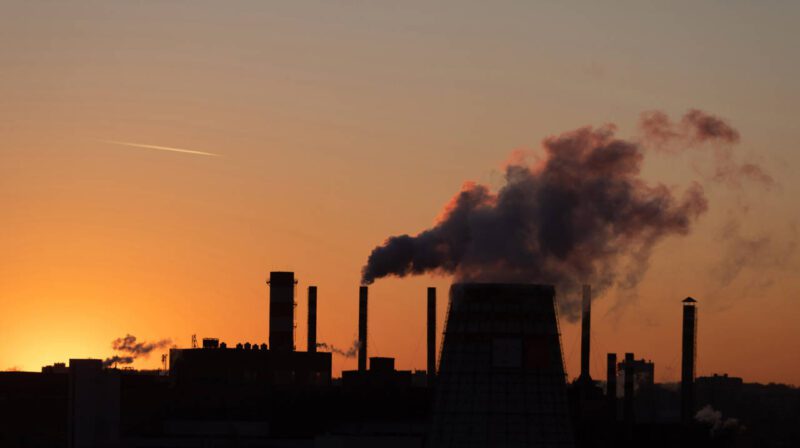Carbon capture and storage technologies
Modalidad online |
|
50 hours / 12 weeks |
|
|
Dates: 25th of November to 17th of February |
| Standard | Unemployed Or Student |
| $335 | $432 |
Introduction
Most of these emissions come from power plant, heavy industry, and refineries the largest emitters of CO2, CCS can capture at least 90 percent of these CO2 emission. Before it’s transported in liquid form by pipeline or ship and storage safely and permanently far below earth’s surface this Course process will discuss how CO2 emission is captured and stored oil gas and CO2 for millions of years, to reduce our emission on time that’s why this combination of CCS renewables and energy efficiency will lead us to the sustainable energy systems of the future.
Objectives
The course objectives are to present and discuss the basic idea of Carbon capture and preventing it from being released into the atmosphere and the Storage Process. The topics covered are as follows:
- Capturing CO2: the first step in the CCS process is capturing, or separating, the CO2 from the fuel source used at power generation plants or industrial manufacturing
- Transporting CO2: the second step is transporting the captured CO2 to the storage site undergo geologic formations such as depleted oil or gas reservoirs.
- Injecting CO2: the third and final component of CCS is injecting CO2 into underground reservoirs for storage.
Limited places.
Module 1. Introduction (1 week)
- – Terminology
- – Role in climate change
- – Separation technologies
- – Transport
- – Related matters
Module 2. Carbon capture, storage, and technologies (2 weeks)
- – Technology overview
- – Pre-combustion processes
- – Oxyfuel combustion processes
- – Direct air carbon capture and storage (DACCS)
Module 3. Factors affecting the carbon capture technologies (1 week)
- – Post-combustion
- – Pre-Combustion Capture
- – Oxy-Fuel Combustion
- – Where carbon-dioxide is storage?
Module 4. Use of captured carbon (3 weeks)
- – Decomposition of carbon into CO and O2
- – CO2 derived fuels
- – CO2 derived polymers
- – Captured carbon for use in building materials
- – COa use in agriculture
Module 5. New opportunities and emerging markets in captured CO2. (2 weeks)
Module 6. Application potential, related impact, and opportunities (2 weeks)
Module 7. Tools to calculate carbon footprint (1 Week)
References
Samuel Sami Howard
Dr. Samuel is the Founder of TransPacific Energy Inc. He was for 25 years a Professor and Director of the Research Centre for Energy Conversion CRCE, the University of Moncton, a Research Associate at UNLV, and a lecturer at San Diego State University. and Professor and Director of (Renewable Energy Center (CER) at UCAUAE. He also regularly lectures in his area of expertise. He received his Ph. D from the University of Montreal, Canada, and JD from Novus Law School, US. He authored and co-authored over 240 published papers in highly indexed Scientific Journals on Energy Conversion and Management, Waste Heat to Power, Renewable Energy, Thermal storage, Refrigerant Mixtures, and their use in Waste Heat Recovery and Power Production as well as HVAC. Dr. Samuel works in hybrid renewable energy using magnetized nanofluids in PV solar, PV-thermal solar, CSP, Geothermal energy, Fuel Cell, Hydrogen production, Thermal Energy Storage, Biomass-driven ORCs, Wind Turbines, Solar-driven Desalination, and Solar-driven OTEC. Dr. Samuel specialized in remote power generation with Renewable Energy.
Dr. Samuel holds 14 patents in refrigerants and refrigerant mixtures, thermodynamics, energy management, storage and conversion, heat recovery, and green energy as well as renewable energy. He also offered online and in-class courses in renewable energy at SDSU, University of San Diego, AAU., and NDU. Dr. Samuel is a fellow of ASME and ASHRAE. He is also the Editor-in-chief of IESJ and associate editor and guest-editor of several highly indexed journals.
Also earned a Dispute Resolution Certificate from Pepperdine University, School of Law, CA, USA, and acts as a mediator and expert witness in energy management and renewable energy and industrial disputes and member of different Associations of Expert Witness.
The course is delivered online through our easy-to-use Virtual Campus platform. For this course, a variety of content is provided including:
– eLearning materials
– Videos
– Interactive multimedia content
– Live webinar classes
– Texts and technical articles
– Case studies
– Assignments and evaluation exercises
We regularly update this course to ensure the latest news and state-of-the-art developments are covered, and your knowledge of the subject is current.
Live webinars form part of our course delivery. These allow students and tutors to go through the course materials, exchange ideas and knowledge, and solve problems together in a virtual classroom setting. Students can also make use of the platform’s forum, a meeting point to interact with tutors and other students.
The tutoring system is managed by email. Students can email the tutor with any questions about the course and the tutor will be happy to help.
Engineers, environmental scientists, policymakers, project managers, and executives will find value in gaining a comprehensive understanding of carbon capture, utilization, and storage (CCUS) technologies.
Once a student finishes the course and successfully completes the assignments and evaluation tests, they are sent an accreditation certificate. The certificate is issued by Ingeoexpert to verify that the student has passed the course. It is a digital certificate that is unique and tamper-proof – it is protected by Blockchain technology. This means it is possible for anyone to check that it is an authentic, original document.
You will be able to download the certificate in an electronic format from the Virtual Campus platform. The certificate can be forwarded by email, shared on social networks, and embedded on websites. To see an example, click here.
The use carbon capture to cut pollution from steel plants today and there will still be plenty of opportunities for new technologies to enter the market for low-carbon steel in the future. There is no reason why using carbon capture to cut pollution today will block promising technologies.
The global carbon capture and storage (CCS) market size was valued at 2.4 billion U.S. dollars in 2023. The global CCS market size is forecast to register a CAGR of 13.5 percent between 2024 and 2031 to reach a value of 16.5 billion U.S. dollars in the latter year.
Introduction
Most of these emissions come from power plant, heavy industry, and refineries the largest emitters of CO2, CCS can capture at least 90 percent of these CO2 emission. Before it’s transported in liquid form by pipeline or ship and storage safely and permanently far below earth’s surface this Course process will discuss how CO2 emission is captured and stored oil gas and CO2 for millions of years, to reduce our emission on time that’s why this combination of CCS renewables and energy efficiency will lead us to the sustainable energy systems of the future.
Objectives
The course objectives are to present and discuss the basic idea of Carbon capture and preventing it from being released into the atmosphere and the Storage Process. The topics covered are as follows:
- Capturing CO2: the first step in the CCS process is capturing, or separating, the CO2 from the fuel source used at power generation plants or industrial manufacturing
- Transporting CO2: the second step is transporting the captured CO2 to the storage site undergo geologic formations such as depleted oil or gas reservoirs.
- Injecting CO2: the third and final component of CCS is injecting CO2 into underground reservoirs for storage.
Limited places.
Module 1. Introduction (1 week)
- – Terminology
- – Role in climate change
- – Separation technologies
- – Transport
- – Related matters
Module 2. Carbon capture, storage, and technologies (2 weeks)
- – Technology overview
- – Pre-combustion processes
- – Oxyfuel combustion processes
- – Direct air carbon capture and storage (DACCS)
Module 3. Factors affecting the carbon capture technologies (1 week)
- – Post-combustion
- – Pre-Combustion Capture
- – Oxy-Fuel Combustion
- – Where carbon-dioxide is storage?
Module 4. Use of captured carbon (3 weeks)
- – Decomposition of carbon into CO and O2
- – CO2 derived fuels
- – CO2 derived polymers
- – Captured carbon for use in building materials
- – COa use in agriculture
Module 5. New opportunities and emerging markets in captured CO2. (2 weeks)
Module 6. Application potential, related impact, and opportunities (2 weeks)
Module 7. Tools to calculate carbon footprint (1 Week)
References
Samuel Sami Howard
Dr. Samuel is the Founder of TransPacific Energy Inc. He was for 25 years a Professor and Director of the Research Centre for Energy Conversion CRCE, the University of Moncton, a Research Associate at UNLV, and a lecturer at San Diego State University. and Professor and Director of (Renewable Energy Center (CER) at UCAUAE. He also regularly lectures in his area of expertise. He received his Ph. D from the University of Montreal, Canada, and JD from Novus Law School, US. He authored and co-authored over 240 published papers in highly indexed Scientific Journals on Energy Conversion and Management, Waste Heat to Power, Renewable Energy, Thermal storage, Refrigerant Mixtures, and their use in Waste Heat Recovery and Power Production as well as HVAC. Dr. Samuel works in hybrid renewable energy using magnetized nanofluids in PV solar, PV-thermal solar, CSP, Geothermal energy, Fuel Cell, Hydrogen production, Thermal Energy Storage, Biomass-driven ORCs, Wind Turbines, Solar-driven Desalination, and Solar-driven OTEC. Dr. Samuel specialized in remote power generation with Renewable Energy.
Dr. Samuel holds 14 patents in refrigerants and refrigerant mixtures, thermodynamics, energy management, storage and conversion, heat recovery, and green energy as well as renewable energy. He also offered online and in-class courses in renewable energy at SDSU, University of San Diego, AAU., and NDU. Dr. Samuel is a fellow of ASME and ASHRAE. He is also the Editor-in-chief of IESJ and associate editor and guest-editor of several highly indexed journals.
Also earned a Dispute Resolution Certificate from Pepperdine University, School of Law, CA, USA, and acts as a mediator and expert witness in energy management and renewable energy and industrial disputes and member of different Associations of Expert Witness.
The course is delivered online through our easy-to-use Virtual Campus platform. For this course, a variety of content is provided including:
– eLearning materials
– Videos
– Interactive multimedia content
– Live webinar classes
– Texts and technical articles
– Case studies
– Assignments and evaluation exercises
We regularly update this course to ensure the latest news and state-of-the-art developments are covered, and your knowledge of the subject is current.
Live webinars form part of our course delivery. These allow students and tutors to go through the course materials, exchange ideas and knowledge, and solve problems together in a virtual classroom setting. Students can also make use of the platform’s forum, a meeting point to interact with tutors and other students.
The tutoring system is managed by email. Students can email the tutor with any questions about the course and the tutor will be happy to help.
Engineers, environmental scientists, policymakers, project managers, and executives will find value in gaining a comprehensive understanding of carbon capture, utilization, and storage (CCUS) technologies.
Once a student finishes the course and successfully completes the assignments and evaluation tests, they are sent an accreditation certificate. The certificate is issued by Ingeoexpert to verify that the student has passed the course. It is a digital certificate that is unique and tamper-proof – it is protected by Blockchain technology. This means it is possible for anyone to check that it is an authentic, original document.
You will be able to download the certificate in an electronic format from the Virtual Campus platform. The certificate can be forwarded by email, shared on social networks, and embedded on websites. To see an example, click here.
The use carbon capture to cut pollution from steel plants today and there will still be plenty of opportunities for new technologies to enter the market for low-carbon steel in the future. There is no reason why using carbon capture to cut pollution today will block promising technologies.
The global carbon capture and storage (CCS) market size was valued at 2.4 billion U.S. dollars in 2023. The global CCS market size is forecast to register a CAGR of 13.5 percent between 2024 and 2031 to reach a value of 16.5 billion U.S. dollars in the latter year.
More info
Finish this course and get a certificate based on Blockchain
Carbon capture and storage technologies

Blockchain technology makes the certificate incorruptible, enabling companies to verifiy its autenticity.
Carbon capture and storage technologies
| $335 | $432 | |
| Get more information |





Reviews
There are no reviews yet.